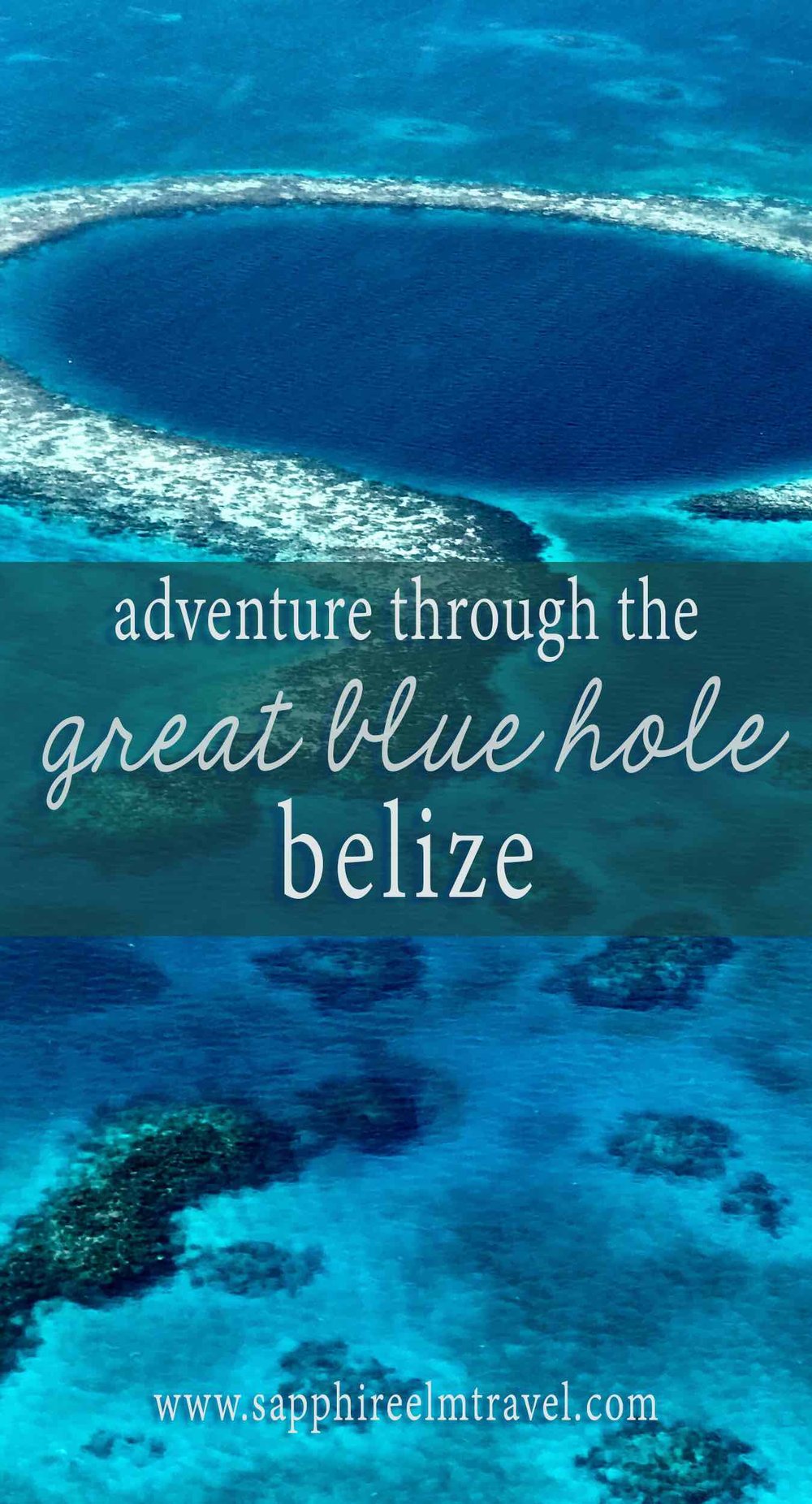How to Adventure through the Great Blue Hole
/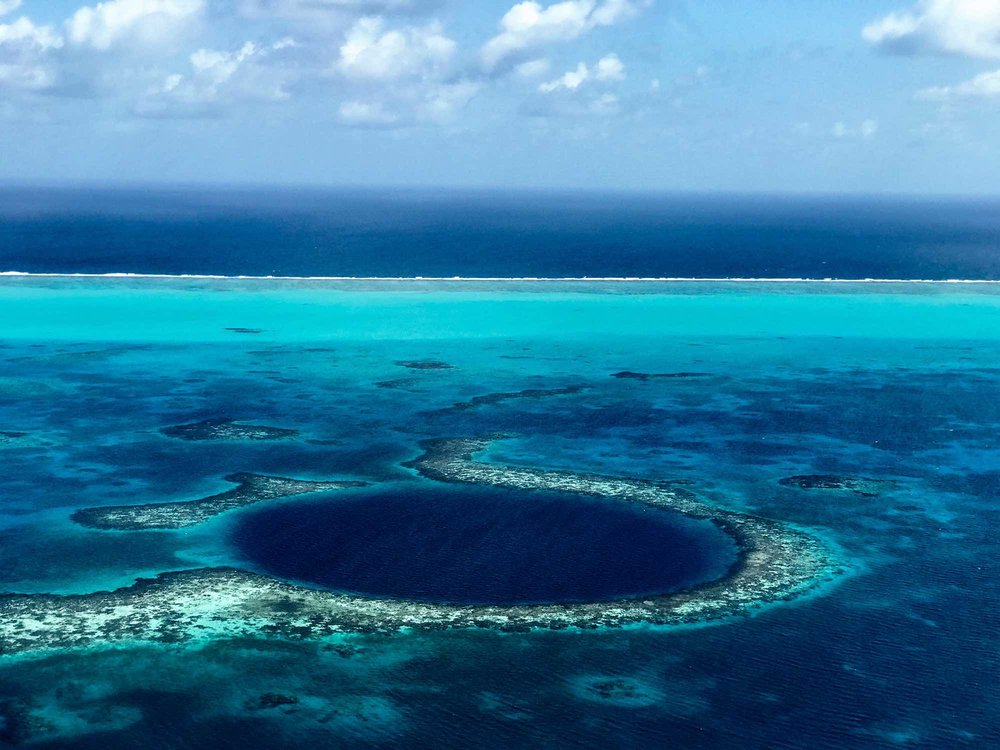
60 miles off the coast of Belize is a big blue hole in the middle of the Caribbean ocean, accurately named the Great Blue Hole.
No doubt you've seen pictures of this phenomenon, as it is one of the world’s most unique and recognizable natural wonders of the world.
But what is Belize's Great Blue Hole? Why is it there? How did it occur? Should you scuba dive into it? Should you even see it?
What is the Great Blue Hole?
The Great Blue Hole is a large underwater limestone sinkhole. Circular in shape, the giant hole is 984 feet (300 meters) across and 410 feet (125 meters) deep.
The Great Blue Hole is the world’s largest natural formation of its kind.
The hole lies near Lighthouse Reef, a small atoll that is apart of the Belize Barrier Reef, a UNESCO World Heritage Site.
Water levels there are so shallow around the hole that parts of the ring surrounding it are known to crest the surface at low tide.
The site was made famous by the French explorer Jacques Cousteau in 1971, who famously declared the Great Blue Hole to be one of the best dive sites in the world. Today, the site is still widely regarded as a bucket list dive.
Formation of the Great Blue Hole
The Great Blue Hole began to take shape more than 150,000 years ago during the last glacial period.
By analyzing the stalactites, it's concluded that the Great Blue Hole formed originally as a cave (before rises in sea level) in at least four stages; 153,000 years ago, 66,000 years ago, 60,000 years ago and 15,000 years ago.
As the oceans began to rise, the cave was flooded and eventually collapsed, thus creating the Great Blue Hole we see today.
Ways to Discover the Great Blue Hole
There are three primary ways of seeing the Great Blue Hole in person:
- Scuba Diving
- Flying
- Snorkeling
As I am not a PADI certified scuba diver so my options for exploring the Great Blue Hole were limited to snorkeling and flying over it.
I attempted to get my scuba certification when I was at my first stop (Ambergris Caye, Belize) but due to unexpected weather creating rough waters, completing the scuba diving skills and necessary dives were out of the question the week I was there.
Although I was disappointed with not being able to do my dive certification before the Great Blue Hole, I knew I still had to see the big blue hole in person.
TRAVELER'S TIP: It is also possible to sky dive over the Great Blue Hole!
I asked around on Ambergris Caye and Caye Caulker, quizzing locals and other travels about what they did and what they recommended. After many conversations I chose to fly over it.
Flying over the Great Blue Hole
Once I arrived at the airport on Caye Caulker, I noticed how tiny the plane was. The plane had a max capacity of 5 passengers.
Although terrifying for people with a phobia of planes, this small plane was a very good sign because I knew that no matter my seat, I would have full access to a window.
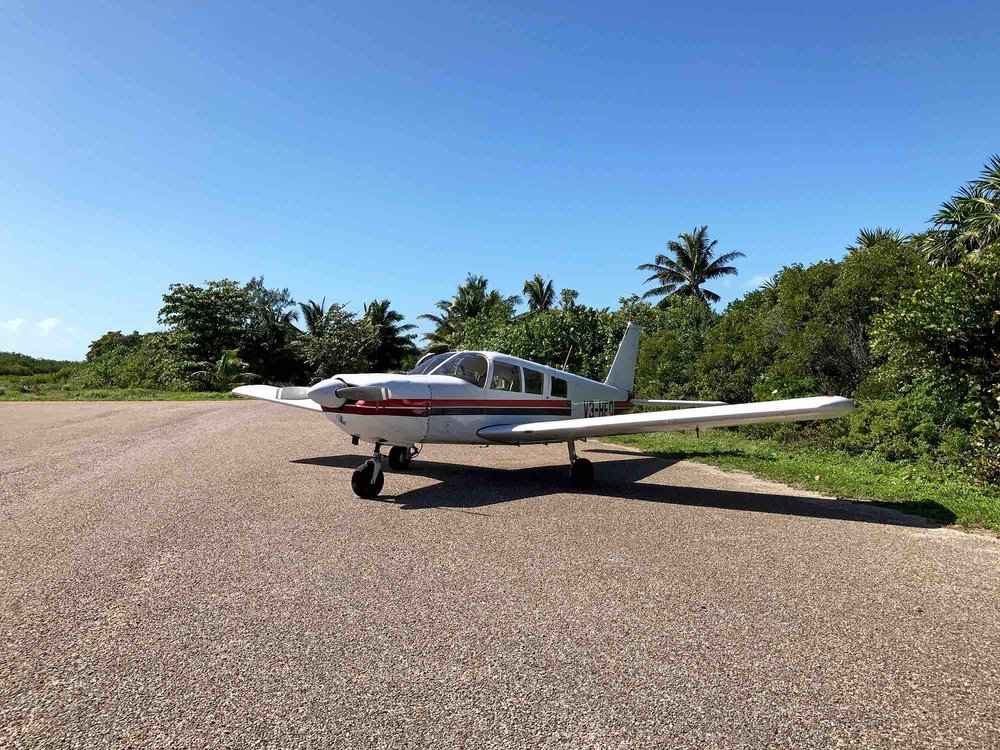
Once we took off, I was in awe of Belize's stunningly blue and clear coastline. I sat there gazing out of the window, adoringly at the eternal sea, with a larger than usual grin on my face.
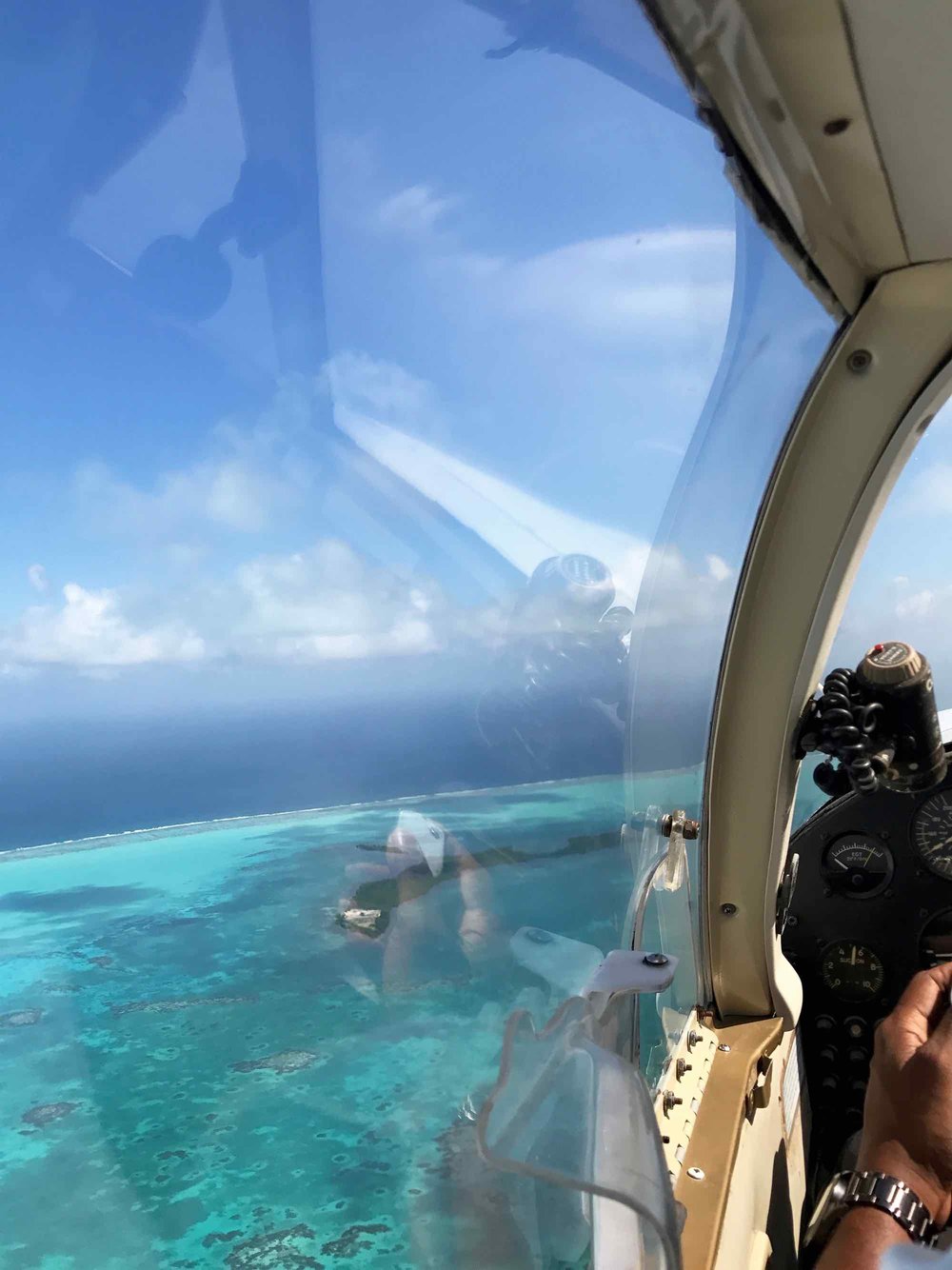
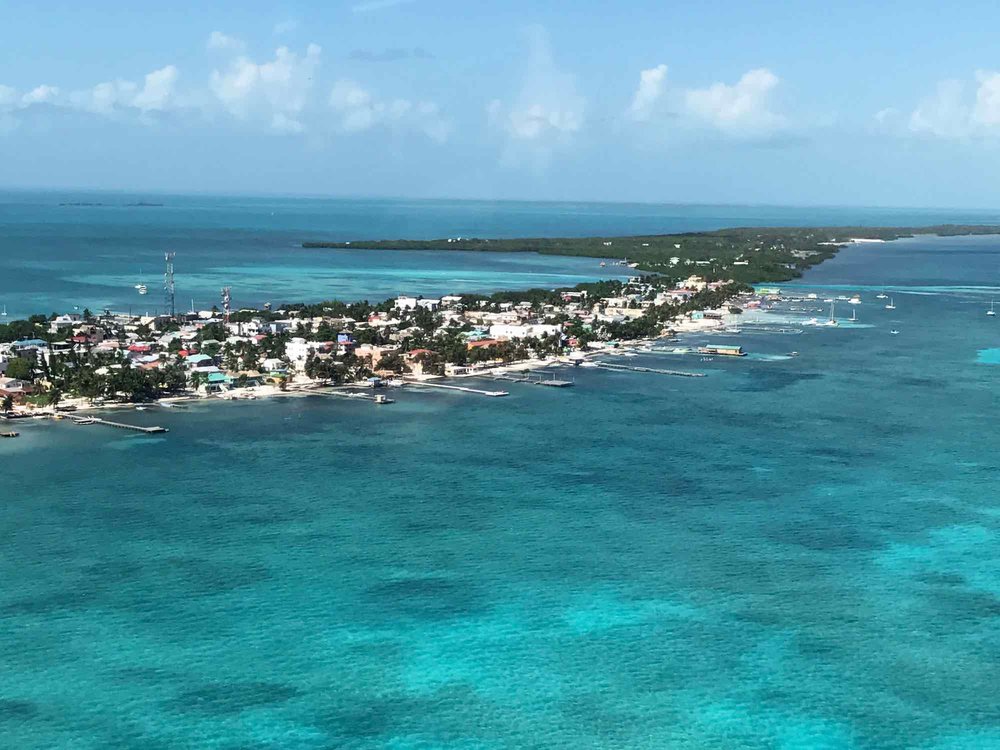
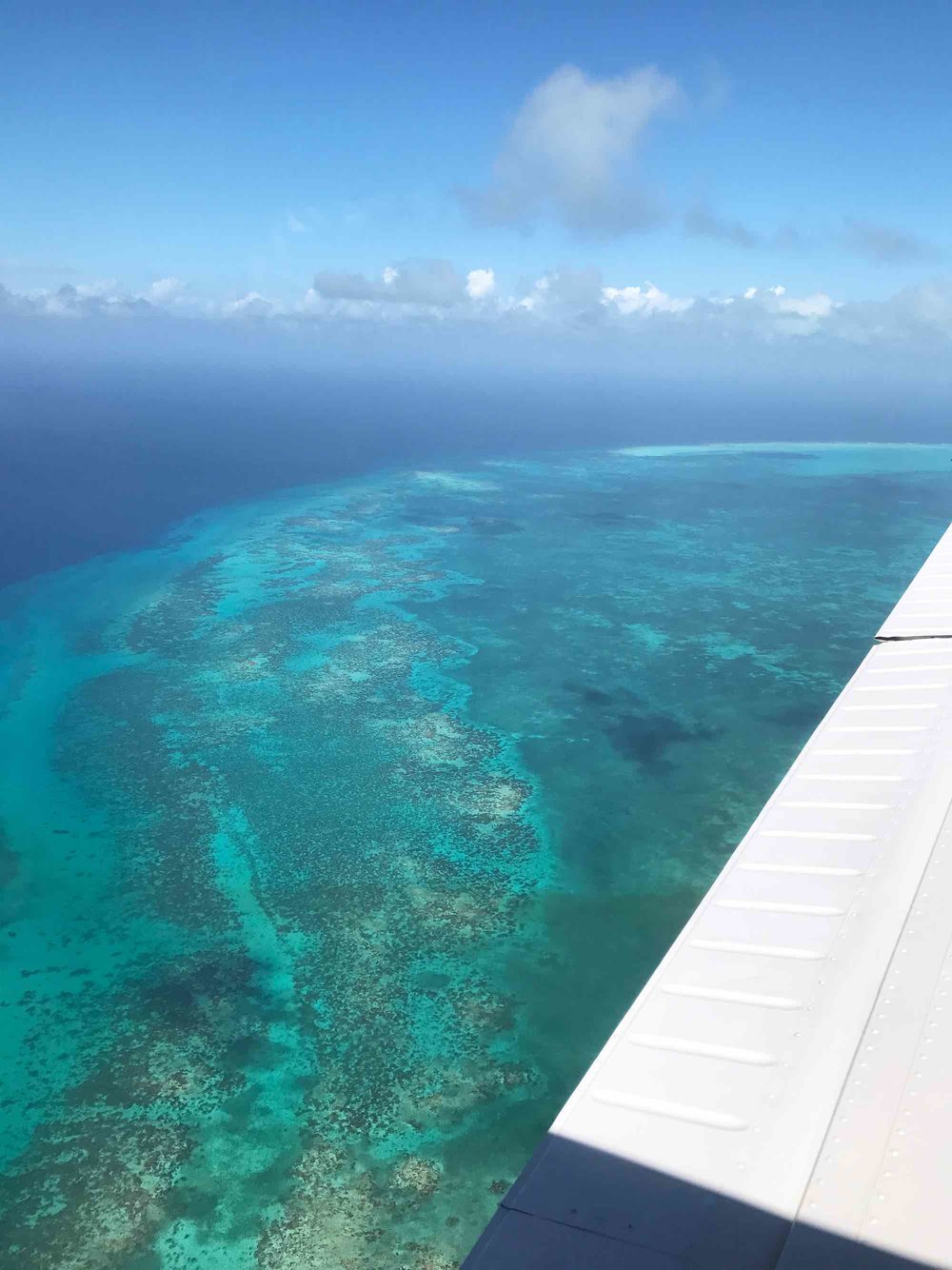
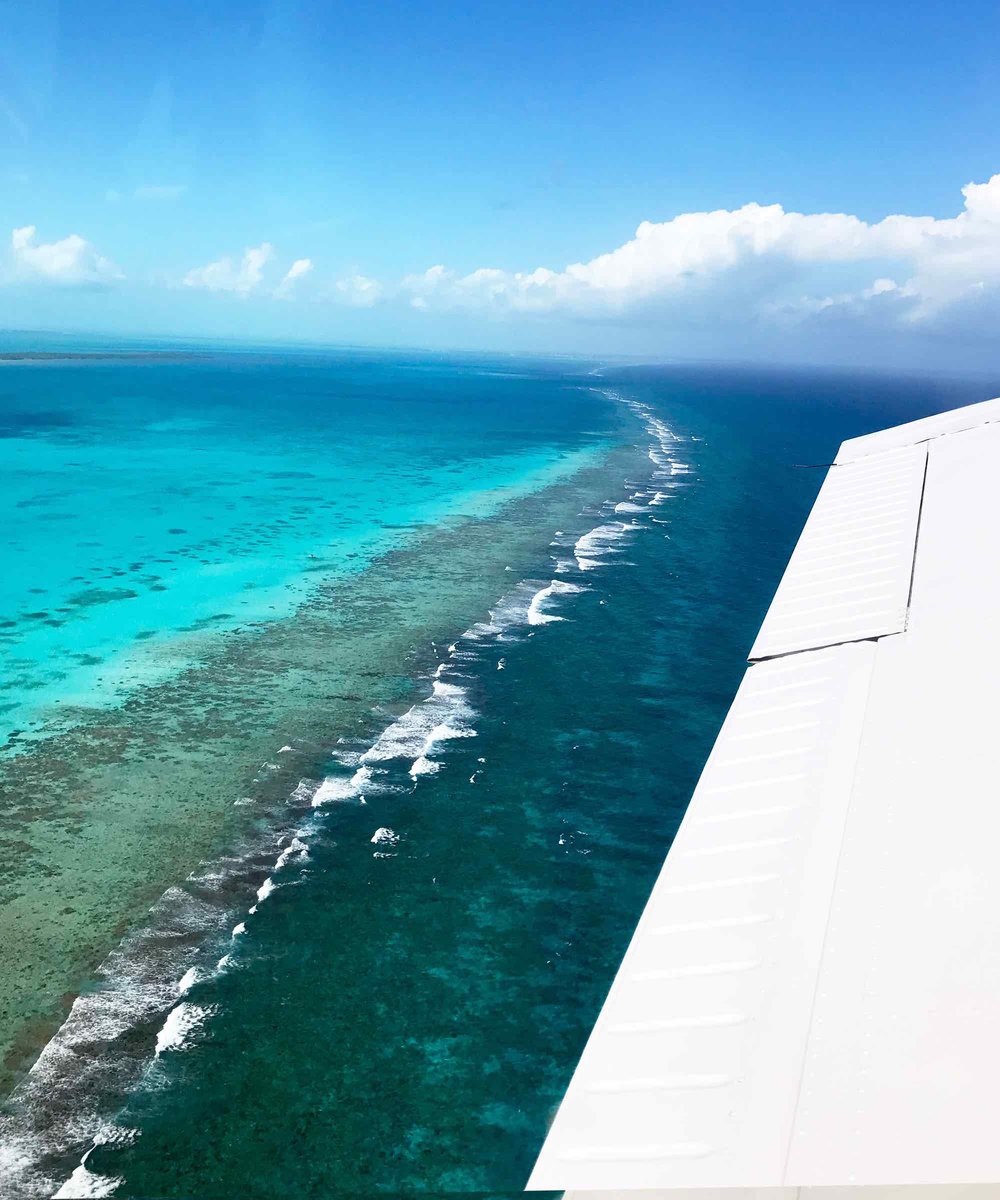
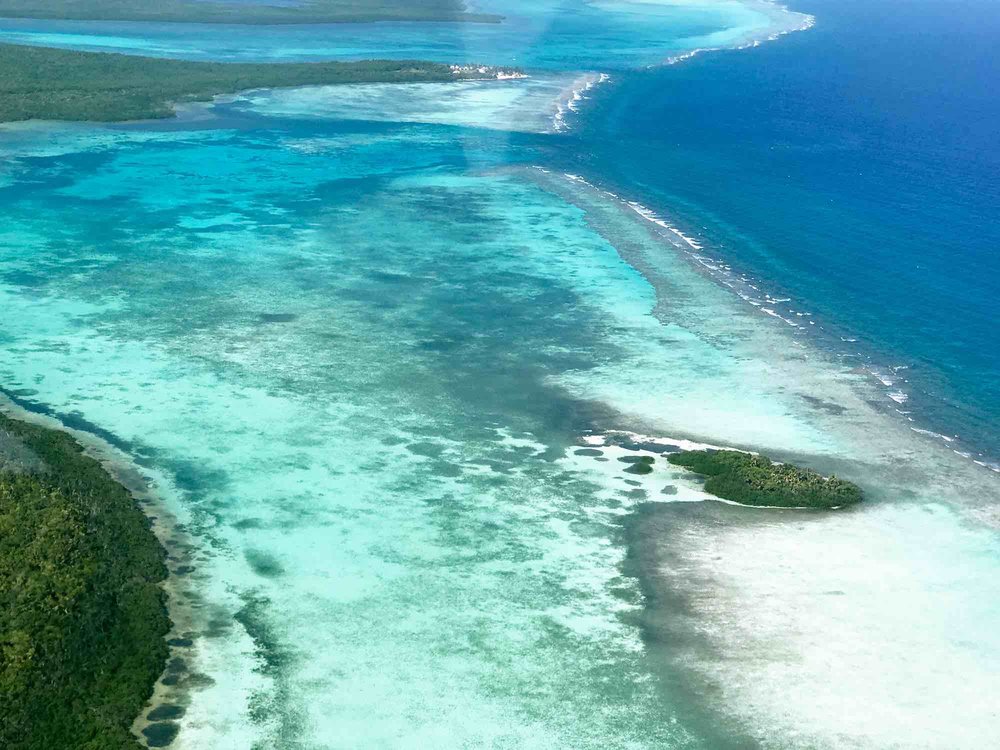
Then suddenly I was worried about the clarity of the windows and the glare of the sun. I thought, "I've just paid several days of budget to do this and I'm going to get a crappy view and even worse pictures!"
Thank goodness this was not the case. The pilot was a professional, he informed us that we would be flying around the hole 3 times slowly clockwise, the 3 times slowly counterclockwise, ensuring we all got spectacular, clear and front row views! Then we flew low into and directly over it!
It was such a blast to be that close to the hole!

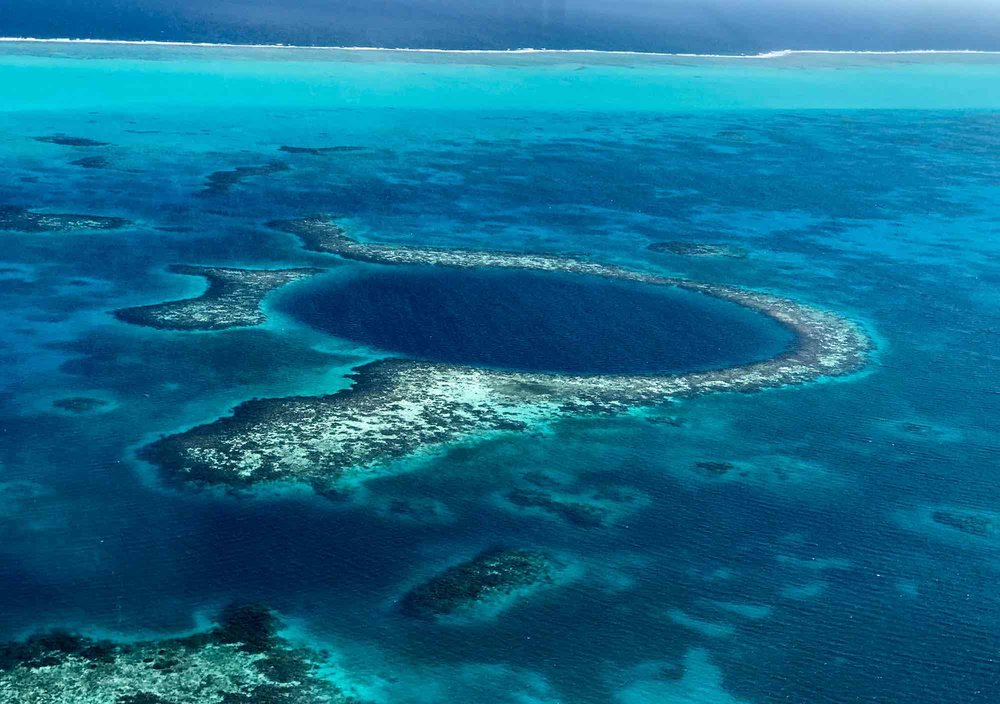
After, we flew over Heart Shaped Island.
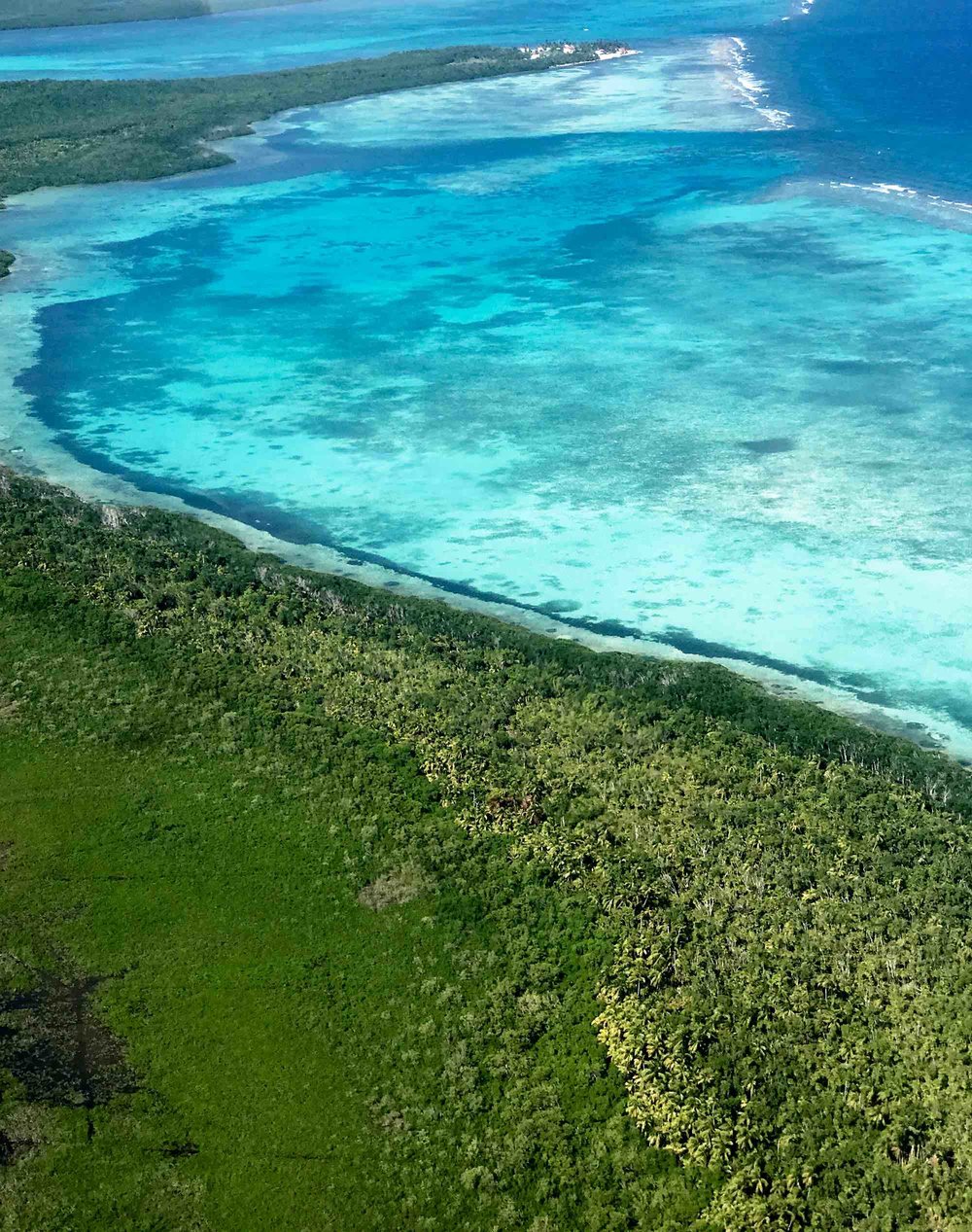
Stunningly Clear Caribbean Ocean Waters
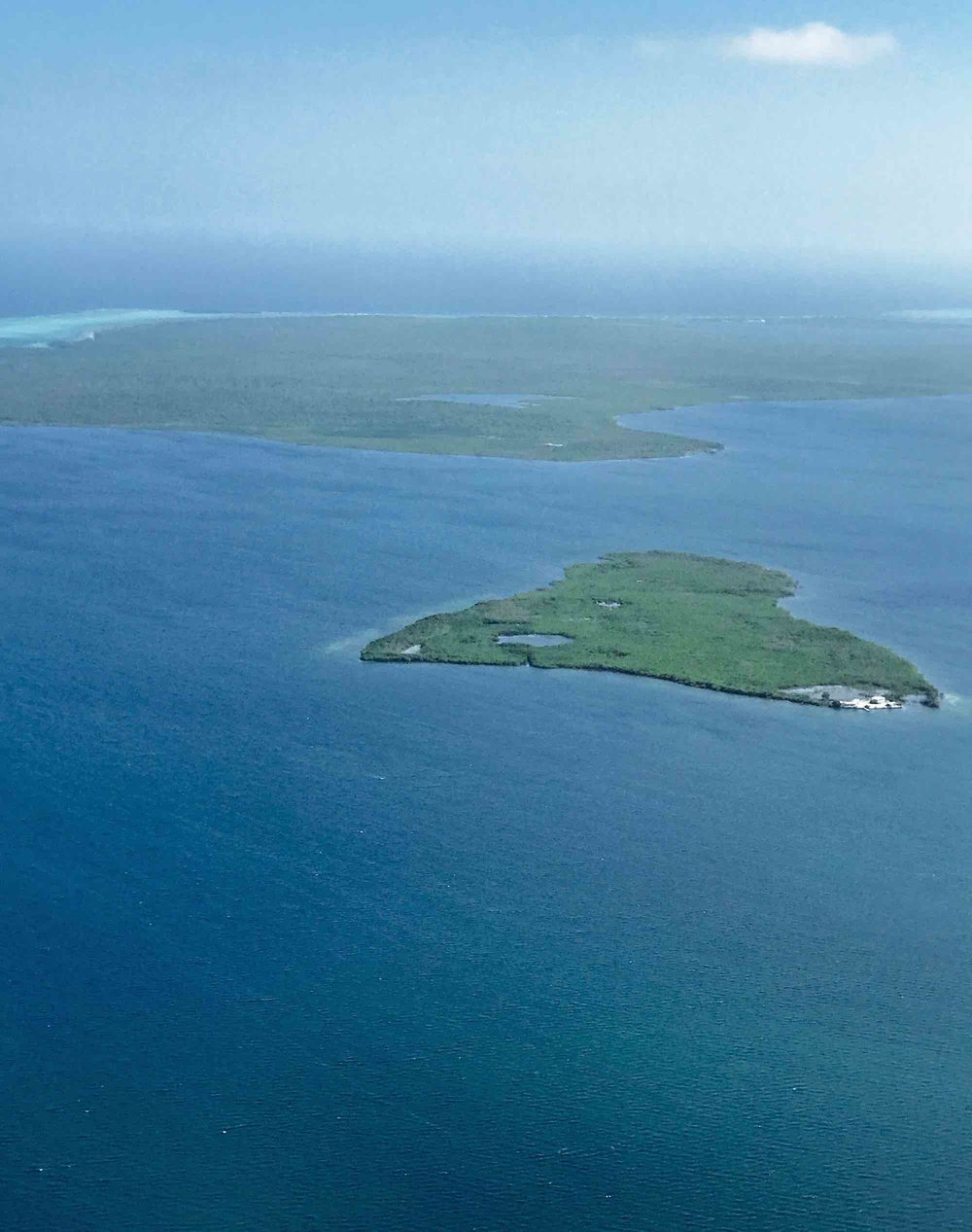
Heart Shaped Island
Flying over the Great Blue Hole was a complete thrill, and I'm so very happy that I was able to experience it up close, especially at that vantage point where you could see it's complete shape surrounded by shallow waters.
The most popular way of experiencing the Great Blue Hole is not to fly over it, it's to dive it. However when I was getting feedback from people who both flown over the hole and dove or snorkeled in it, I got mixed reviews regarding diving it.
Diving the Great Blue Hole
As this site was made famous by the French explorer and diver, Jacques Cousteau, the most popular way to explore the Great Blue Hole is to dive it.
The hole is very deep so it is recommended for more advanced divers because new divers often use too much air too quickly. Additionally the hole is very dark, so you can't see much of anything while diving in it, especially life as there is nothing (visible) living in The Great Blue Hole.
Often, this dive is described as a bucket list dive, a dive you have to check off of your list. Furthermore, it's described as a dive that barely meets (let alone exceeds) expectations. This idea is sad, and disheartening because I believe that we should be making memories and creating experiences that enhance our lives, not so that we can brag to others that we've "been there, done that".
However, if you're curious about this dive, I recommend you try it for yourself. Not to check it off of a list, but to see and what it is like to be in such an iconic space, to be surrounded by the wonder of a natural sinkhole in the middle of the ocean.
Dive Information: two hour bumpy boat ride from Caye Caulker. Includes 2 other dives at other dive spots. Spots can vary, but they are along the Barrier Reef.
Conversely to the disappointing information I was received, a friend of mine recounted his beautiful experience diving in the blue hole which I wanted to share with you.
My friend Aydin describes his experience as; "if you're falling off a cliff, but gravity is on your side. You're weightless, floating. In a sea of darkness without fear but instead, the knowing of how connected you are to nature and history."
The "Other" Blue Hole
On-shore caves of similar formation, as large collapsed sinkholes, are well known in Belize and in the Yucatán Peninsula, where they are known as cenotes.
In fact, there is another big blue hole, or cenote,, in Belize, called the Inland Blue Hole.
Like the Great Blue Hole, the Inland Blue Hole is also a sinkhole originally formed as a cave and then collapsed into a pool or hole as temperatures and water levels rose.
It is located on the mainland just off the Hummingbird Highway, 12 miles south of the capital city of Belmopan in Blue Hole National Park which covers 575 acres of lush jungle to explore.
The Inland Blue Hole is a swimming hole with a wide, shallow sandy area where you can swim and relax surrounded by shear rock walls, hanging vines and lush jungle. It's easy to access from the parking area at only a 15 minute walk.
Blue Hole National Park includes the Inland Blue Hole, St. Herman’s Cave, and Crystal Cave. In this national park you can see a wide variety of birds and big cats such as the Jaguar, Ocelot and Jaguarundi.
One thing is without a doubt; the Great Blue Hole is a break-taking marvel and only the world's luckiest people have the opportunity to experience it in real life.
Sapphire & Elm Travel Co. specializes in creating custom vacations for each individual client to ensure a memorable vacation unique to you.
Contact us to create your one-of-a-kind vacation to Belize.
Save on Pinterest
